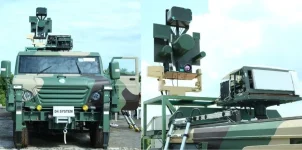- Views: 3K
- Replies: 39

In a move reflecting the complexities of regional geopolitics, Pakistan has reportedly sought to acquire Russia's S-350 Vityaz air defence system after its initial request for the more advanced S-400 was turned down.
Sources suggest that Russia's decision to decline the S-400 sale stems from a desire to avoid supplying identical high-end defence capabilities to neighboring nations with a history of conflict, especially as India already operates the S-400. This careful approach underscores Russia's efforts to maintain a balanced defence relationship in South Asia while preventing an escalation of the arms race between India and Pakistan.
While not as sophisticated as the S-400, the S-350 Vityaz is a formidable medium-to-long-range surface-to-air missile (SAM) system. With a range of up to 120 kilometers, it can track and engage a variety of targets, including ballistic and cruise missiles, and various aircraft.
Acquisition of the S-350 would significantly bolster Pakistan's current air defence capabilities, providing a robust mid-range layer to counter aerial threats. Experts highlight the system's flexibility, efficiency, and ability to neutralize diverse aerial threats, potentially enhancing Pakistan's defence posture along its borders.
Pakistan's existing air defence network primarily comprises Chinese and indigenously developed systems, supplemented by limited acquisitions from other allies. Although functional, these systems lack the advanced layered defence offered by platforms like the S-400 or S-350. Key assets in Pakistan's current arsenal include:
- Anza Series MANPADS: Pakistan's domestically produced Man-Portable Air Defence System (MANPADS) series, the Anza Mk-I, Mk-II, and Mk-III, are shoulder-fired missiles with limited range (4 to 6 kilometers) designed to counter low-flying threats. While effective in certain scenarios, they lack the sophistication to engage advanced aircraft and missile systems.
- HQ-9/P: Pakistan's most advanced air defence system, the Chinese-made HQ-9/P, is a medium-to-long-range SAM system with a range of approximately 100 to 125 kilometers. It can intercept both aircraft and missiles, enhancing Pakistan's ability to address aerial threats within its borders.
- LY-80 (HQ-16): Another Chinese system, the LY-80, provides medium-range air defence with an engagement range of up to 40 kilometers. While it contributes to Pakistan's air defence strategy, its range and target handling capacity are limited compared to more advanced systems.
- FM-90 and HQ-7: These short-range systems are designed for point defense of specific strategic assets or locations. With limited ranges (10 to 15 kilometers), they primarily target low-altitude threats and are not suited for comprehensive national air defense.
This development highlights the ongoing complexities of arms sales and defence cooperation in a region marked by historical tensions and strategic considerations. It remains to be seen how Russia's decision and Pakistan's pursuit of the S-350 will ultimately impact the regional security landscape.

